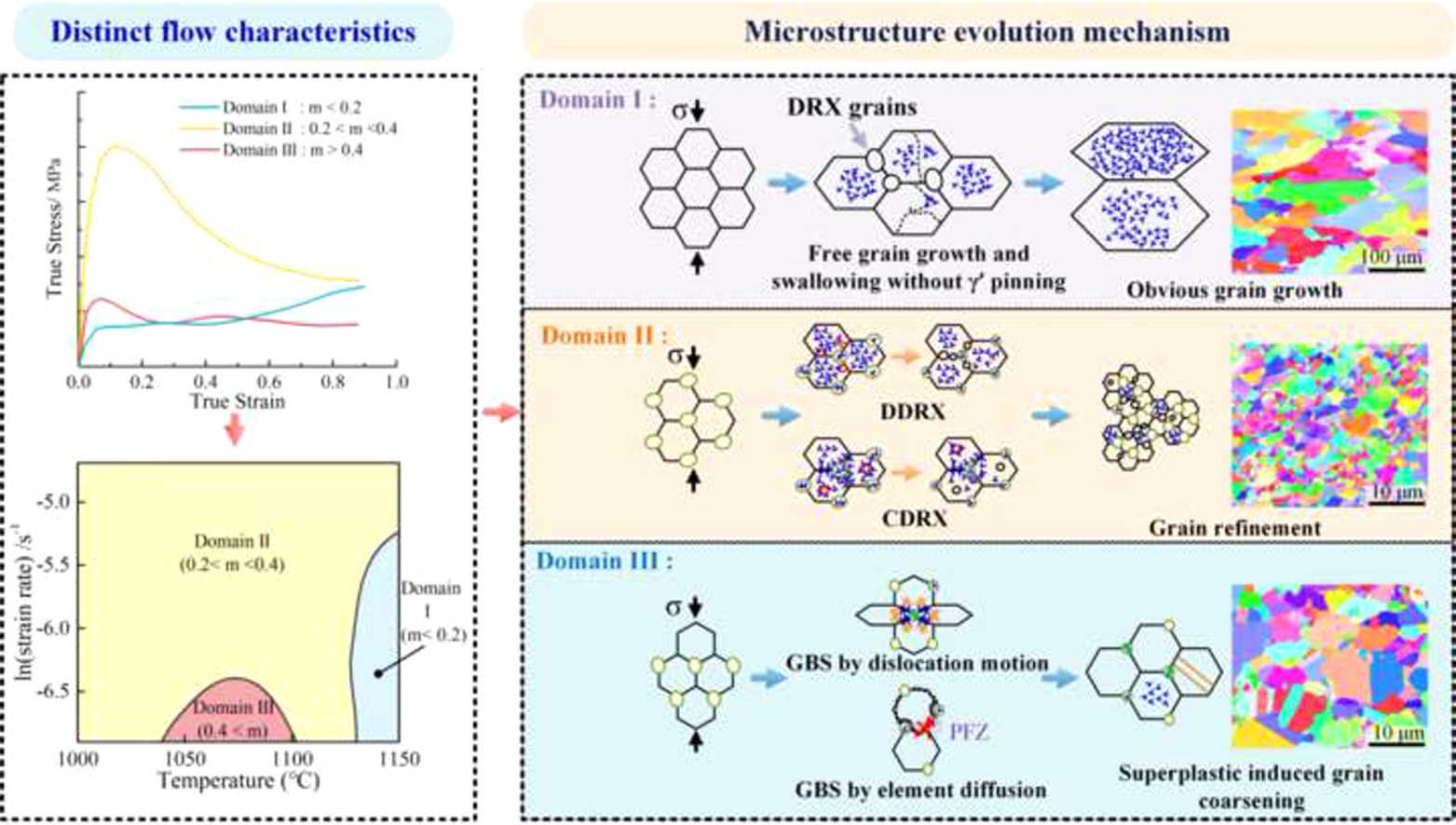·Paper Publications

Indexed by: Journal paper
Journal: Journal of Materials Science & Technology
Included Journals: SCI
Date of Publication: 2023-05-22
Impact Factor: 10.319
Abstract: Isothermal forging (IF) is an effective method for forming difficult-to-deform materials like P/M superalloys. Understanding the isothermal compression microstructural evolution mechanism of a novel P/M superalloy provides the basis for its optimized IF planning. In this study, the isothermal compression tests of a novel fine-grained P/M nickel-based superalloy were carried out at 1000–1150 °C with strain rates of 0.001–0.01 s−1. The results indicated that the alloy exhibits three distinct flow characteristics: continuous softening after reaching the peak stress, near-steady superplastic flow, and discontinuous hardening, corresponding to different strain rate sensitivity exponent (m) values. Varied microstructural evolution mechanisms, including grain boundary sliding (GBS), dynamic recrystallization (DRX), and grain growth, are dominated in different m-value domains. Meanwhile, different roles of primary γ' play in microstructural evolution were clarified. A moderate fraction of primary γ' with 8.5%–14.2% can well coordinate the GBS and hinder excessive grain growth at a high m value domain (m > 0.4). When 0.2 < m < 0.4, the role of the primary γ' is changed to promote dislocation accumulation, accelerating the nucleation of DRXed grains. As the primary γ' is dissolved at 1150 °C, obvious grain growth was observed after compression. Work hardening effect by overgrown grains competed with DRX softening results in the discontinuous rising stress.
Links to published journals: https://doi.org/10.1016/j.jmst.2023.03.042
